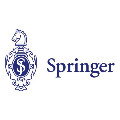As an efficient neural network model for graph data, graph neural networks (GNNs) recently find successful applications for various wireless optimization problems. Given that the inference stage of GNNs can be naturally implemented in a decentralized manner, GNN is a potential enabler for decentralized control/management in the next-generation wireless communications. Privacy leakage, however, may occur due to the information exchanges among neighbors during decentralized inference with GNNs. To deal with this issue, in this paper, we analyze and enhance the privacy of decentralized inference with GNNs in wireless networks. Specifically, we adopt local differential privacy as the metric, and design novel privacy-preserving signals as well as privacy-guaranteed training algorithms to achieve privacy-preserving inference. We also define the SNR-privacy trade-off function to analyze the performance upper bound of decentralized inference with GNNs in wireless networks. To further enhance the communication and computation efficiency, we adopt the over-the-air computation technique and theoretically demonstrate its advantage in privacy preservation. Through extensive simulations on the synthetic graph data, we validate our theoretical analysis, verify the effectiveness of proposed privacy-preserving wireless signaling and privacy-guaranteed training algorithm, and offer some guidance on practical implementation.
翻译:作为图表数据的一个高效神经网络模型,图形神经网络(GNNs)最近发现各种无线优化问题的应用是成功的。鉴于GNN的推论阶段可以自然地以分散的方式自然地实施,GNN是下一代无线通信中分散控制/管理的潜在促进因素。然而,由于邻居之间在与GNNs分散推论期间的信息交流,隐私渗漏可能发生。为了进一步增强通信和计算效率,我们在本文件中分析并加强无线网络中与GNNS分散推论的隐私隐私。具体地说,我们采用地方差异隐私权作为衡量标准,并设计新的隐私保护信号以及隐私保障培训算法,以实现隐私保护推断。我们还界定了SNR-privacy交易功能,以分析与GNNNs在无线网络中分散推论的性能上限。为了进一步增强通信和计算效率,我们采用了超空计算技术,并在理论上展示其在隐私保护方面的优势。我们通过对合成图表数据进行广泛的模拟,验证我们的理论分析,验证了对隐私进行实际保密性信号培训,并提供了无线性保护。




